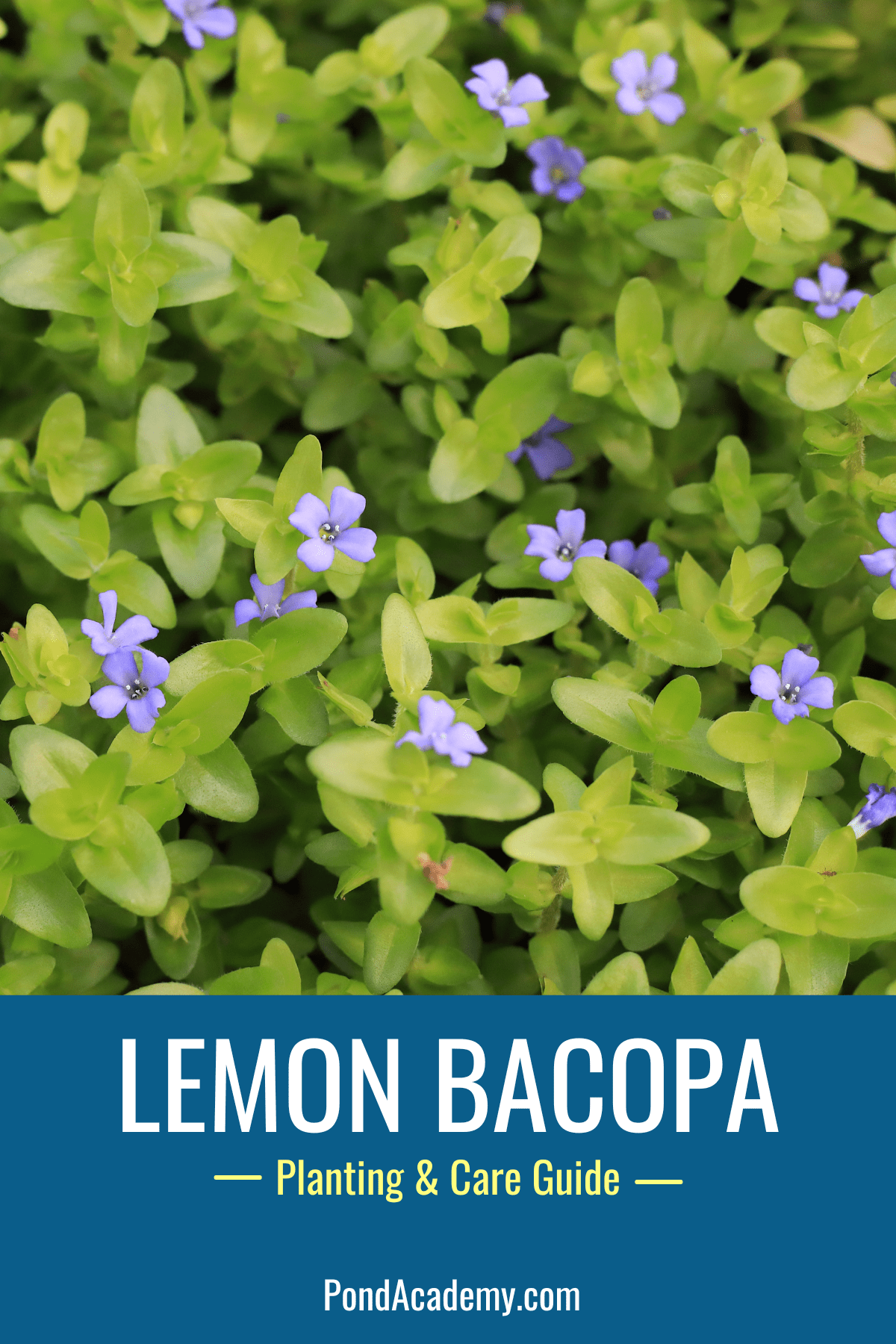Lemon Bacopa Pond Plant - Care & Grow Guide
Pond Academy is reader-supported. Buying through links on our site may earn us an affiliate commission. As an Amazon Associate I earn from qualifying purchases.

Lemon Bacopa (Bacopa Caroliniana) is a very interesting pond plant that can mostly be found in the southern United States, South Korea, and even some parts of Europe.
The lemon bacopa is a very easily recognizable plant. It features simple yet distinct blue five-leave flowers and has a lemony scent. It makes a great filler plant between waterfall rocks and provides a soft transition along your pond's edge.
The roots of this plant are extremely useful to your pond's water and the environment – utilizing excess nitrogen, phosphorus, and heavy metals - thus acting as a purifier for your pond!
Scientific Name
Bacopa Caroliniana
Common Names
Blue waterhyssop
Plant Type
Marginal/bog plant
Light Requirements
Full sun to partial shade
Hardiness Zones
USDA Zone 6 - 11
Bloom
Early April through late September, depending on temperature
Grow Up To
6+ inches tall with 2 foot spread
Flower Color
Purple, blue
How to Plant Lemon Bacopa in a Pond
Lemon bacopa can be planted in containers with loamy soil and placed on pond shelves as an emergent plant or placed at the bottom of your pond as a submerged plant. I recommend planting in pots as opposed to directly in your pond's substrate to help contain growth.
Get Our Best Pond Tips Sent to Your Inbox for Free!
Join thousands of others and learn from our decades of pond building and maintenance experience! Your pond will thank you!
By subscribing you agree to receive emails from PondAcademy.com. We will always respect your privacy and you can unsubscribe at any time.
Lemon Bacopa Care Guide
Lemon Bacopa is fairly low maintenance and only requires regular trimming to keep it at your desired size. Be sure to remove and properly discard any clippings away from the water, so they don't decompose in your pond and potentially cause water quality issues.
Lemon Bacopa does not require any special fertilizers as it consumes nutrients from the soil to help fuel growth.
Lemon Bacopa will not survive in an outdoor pond during winter in colder climates. Before the first frost hits, move the plants indoors and allow them to grow in an aquarium or tub (ensure they get ample light). Or simply allow them to die off and replant in Spring.





